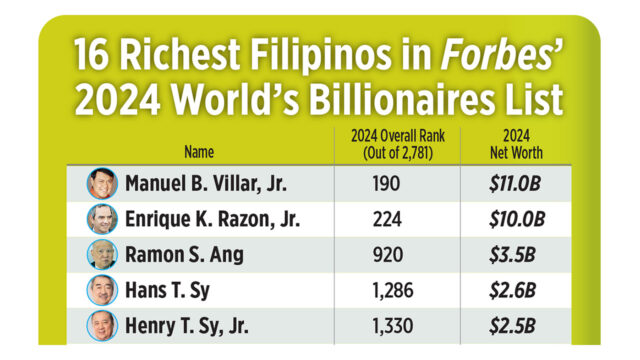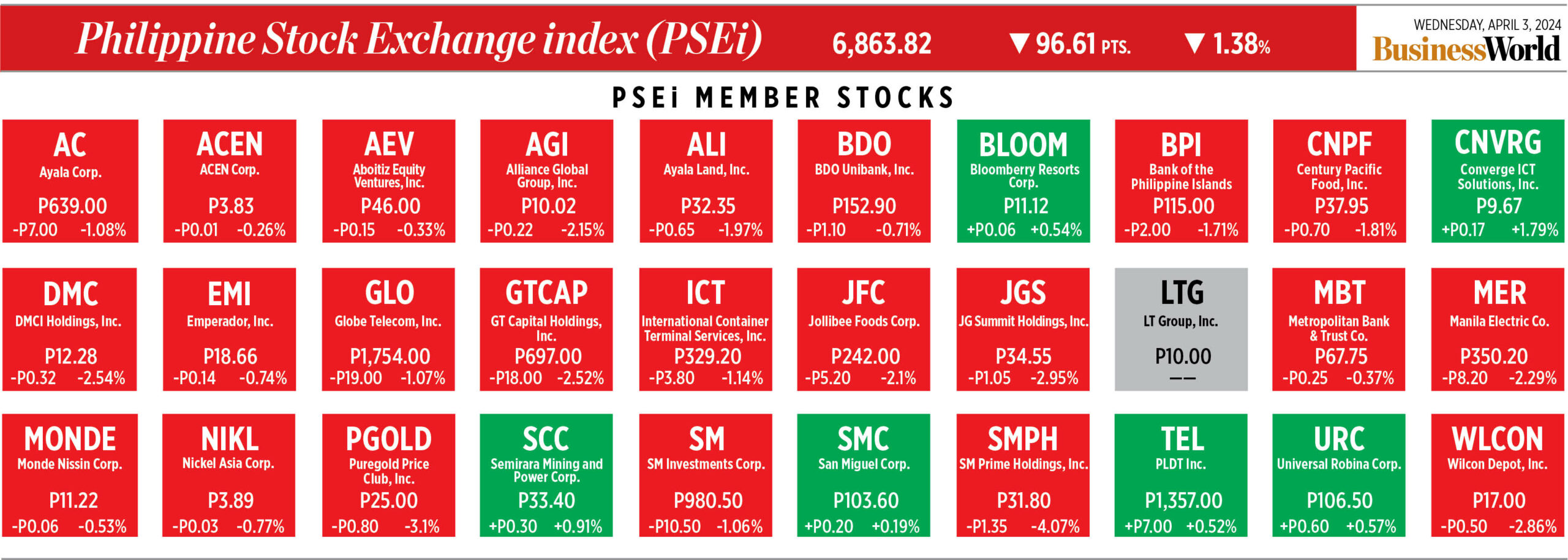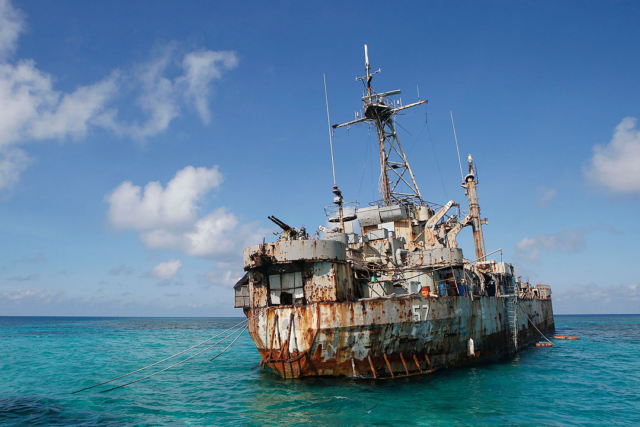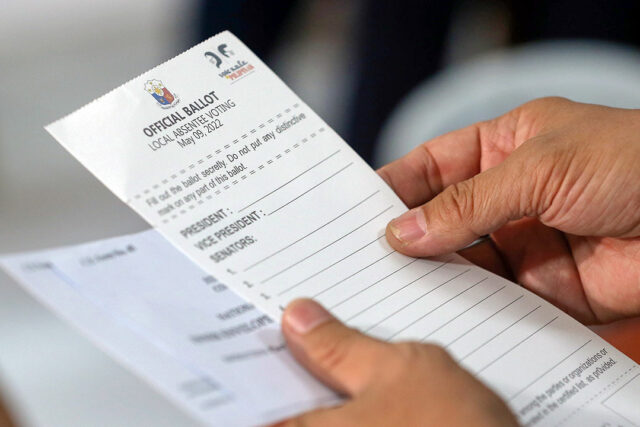Loaded with bullet points
ESPECIALLY during the pandemic (now, seemingly so long ago) the use of PowerPoint presentations for virtual meetings was almost obligatory — can you see my screen? Anyone giving a talk without any visual aid (complete with quotations from Epictetus or Oscar Wilde lifted from the net) is considered unprepared.
A presentation, based on occasional glances at written talking points on a clipboard, seems too arcane, having gone out with the white board with pentel pen scribblings by the speaker himself. The visuals are now almost movie-screen sized in the background. The TED talk type of presenter strolls around the stage like a stalker with a clicker and an audio headset, like those used in stage musicals.
Where will the visual aid be without cartoons (you don’t have to laugh) and the punchy phrasing of short subject headings, called “bullet points.”
The bullet point is credited to Robert McNamara, who was president of Ford Motors before he joined “the best and the brightest” to serve as Secretary of Defense during the Vietnam War under US President John Kennedy, and then Lyndon Johnson. As an efficiency expert and management luminary, he wanted brief and effective presentations.
McNamara discovered that even complex situations could be summarized by metrics (numbers that can be compared and turned into ratios) and crisp phrases or “bullet points.” A complex situation was boiled down to a phrase to give the impression of being more manageable — body count on the rise.
Consultants use bullets for their situation analyses. These are routinely used for pitches to get new clients.
Bullets are a list of four items on a slide to allow the eye to focus on just a few phrases on the screen. There is no text to support the bullets. Otherwise, it’s a speed-reading contest between presenter and presented. The bullets serve as take-off points for lengthier (but not too lengthy) explanations.
Punchy and dramatic words are preferred. If department heads do not talk with each other, going off in uncoordinated directions with no mind to resources being sapped or the impact of such actions on the company, such a situation is captured in two words: “silo mentality.” It is good to pick words not found in ordinary conversation (Can I see your silo?) so that they smack of divine revelation and allow the prophet to explain his riddle. The picture for this bullet point is a storage structure for wheat.
Characters are not named and instead described by their behavior, usually dysfunctional (note spelling). A “change agent” (good) is different from a “loose cannon” (bad), even if they’re trying to do the same thing which is to upend the status quo.
Bullet points render the most complex issues accessible in short punchy descriptions. The exit of key managers and their joining the competition can be dismissed with the phrase “high executive churn rate.”
Bullet points address short attention spans. The need for concision may be due to a busy schedule. Or it may be a case of an inability to hold three different thoughts (love, life, and the pursuit of happiness) while chewing doughnuts and sipping iced cafe latte’ at the same time.
Statistics tend to overwhelm us. Some numbers are thrown away as irrelevant. Bullet points connect the dots on the remaining ones to draw a specific picture. Stories are a way of explaining reality. The new field of “behavioral economics” looks at non-monetary considerations in decision-making and points to the power of “framing.” Is a food item that is 90% fat-free the same as one with 10% fat?
Why is the price of a particular stock moving up? The story can be as simple as the undue interest of a particular acquiring party and the prospect of a struggle with a competing party or the incumbent shareholders for control. The bullet point, “acquisition target” is enough for sideline players to jump onto the bandwagon. Of course, the whole chase can fall through — closing conditions fail.
Bullet points are the headlines of the narrative like “unrealistic projections” or “debt overload.” Talking points can describe social relationships too. Complex human behavior can be simplified in pithy bullet points — too clingy, high maintenance, existentialist outlook, eye candy, or brain-damaged.
Bullets can be loaded and aimed at the screen. They capture the direction of the narrative… and hopefully the attention of the attendees.
Tony Samson is chairman and CEO of TOUCH xda







 World Car Awards announced the winners of this year’s competition at a ceremony during the 2024 New York International Auto Show (NYIAS). Hyundai Motor’s many nominations reflect its growing stature on the global stage and build on its past success at the World Car Awards. The brand’s IONIQ 5 and IONIQ 6 took back-to-back triple victories in 2022 and 2023 in the World Car, World Electric Vehicle and World Car Design categories.
World Car Awards announced the winners of this year’s competition at a ceremony during the 2024 New York International Auto Show (NYIAS). Hyundai Motor’s many nominations reflect its growing stature on the global stage and build on its past success at the World Car Awards. The brand’s IONIQ 5 and IONIQ 6 took back-to-back triple victories in 2022 and 2023 in the World Car, World Electric Vehicle and World Car Design categories. “On behalf of the entire N team, it’s very gratifying to receive this well-earned recognition from the prestigious World Car Awards jury,” said José Muñoz, President and Global COO of Hyundai Motor Company. “We dedicate this amazing award to our passionate customers who appreciate high-performance vehicles, and we pledge to continue to deliver vehicles that excite and inspire. We are thrilled to lead the charge in this new era of electric performance vehicles and are committed to continually challenging the limits of engineering possibilities for smart mobility.”
“On behalf of the entire N team, it’s very gratifying to receive this well-earned recognition from the prestigious World Car Awards jury,” said José Muñoz, President and Global COO of Hyundai Motor Company. “We dedicate this amazing award to our passionate customers who appreciate high-performance vehicles, and we pledge to continue to deliver vehicles that excite and inspire. We are thrilled to lead the charge in this new era of electric performance vehicles and are committed to continually challenging the limits of engineering possibilities for smart mobility.” Introduced in July 2023 as Hyundai N’s first EV, IONIQ 5 N represents a new segment of driver-focused high-performance EVs through new technologies and elevated racetrack capability, signaling the first step in N’s electrification strategy. It combines the standard IONIQ 5’s Electric Global Modular Platform (E-GMP) with N’s motorsport-bred technologies and leverages N’s expertise from electrified ‘Rolling Labs’ to maximize the EV’s high-performance capabilities. IONIQ 5 N has been widely praised in the media as ‘groundbreaking’, a ‘game-changer’, and the ‘benchmark’ for high-performance EVs. IONIQ 5 N also won Top Gear’s 2023 Car of the Year Award and set the fastest electric SUV lap time at the Nürburgring Nordschleife by Germany’s ‘Sport Auto’.
Introduced in July 2023 as Hyundai N’s first EV, IONIQ 5 N represents a new segment of driver-focused high-performance EVs through new technologies and elevated racetrack capability, signaling the first step in N’s electrification strategy. It combines the standard IONIQ 5’s Electric Global Modular Platform (E-GMP) with N’s motorsport-bred technologies and leverages N’s expertise from electrified ‘Rolling Labs’ to maximize the EV’s high-performance capabilities. IONIQ 5 N has been widely praised in the media as ‘groundbreaking’, a ‘game-changer’, and the ‘benchmark’ for high-performance EVs. IONIQ 5 N also won Top Gear’s 2023 Car of the Year Award and set the fastest electric SUV lap time at the Nürburgring Nordschleife by Germany’s ‘Sport Auto’. “IONIQ 5 N represents a defining moment for Hyundai N and our electrification strategy. By combining our E-GMP platform with N’s motorsport expertise, we have created a groundbreaking high-performance EV that has set a new benchmark in the industry,” said Till Wartenberg, Vice President and Head of N Brand & Motorsport at Hyundai Motor Company. “The accolades and recognition we have received validate our commitment to delivering innovative, driver-focused electric vehicles. With IONIQ 5 N, we are not just redefining what a performance car is, but also shaping the future of electric driving fun.”
“IONIQ 5 N represents a defining moment for Hyundai N and our electrification strategy. By combining our E-GMP platform with N’s motorsport expertise, we have created a groundbreaking high-performance EV that has set a new benchmark in the industry,” said Till Wartenberg, Vice President and Head of N Brand & Motorsport at Hyundai Motor Company. “The accolades and recognition we have received validate our commitment to delivering innovative, driver-focused electric vehicles. With IONIQ 5 N, we are not just redefining what a performance car is, but also shaping the future of electric driving fun.” World Car Awards is an annual event that sees 100 international jurors across 29 countries test-drive and vote on a field of eligible vehicles.
World Car Awards is an annual event that sees 100 international jurors across 29 countries test-drive and vote on a field of eligible vehicles.







